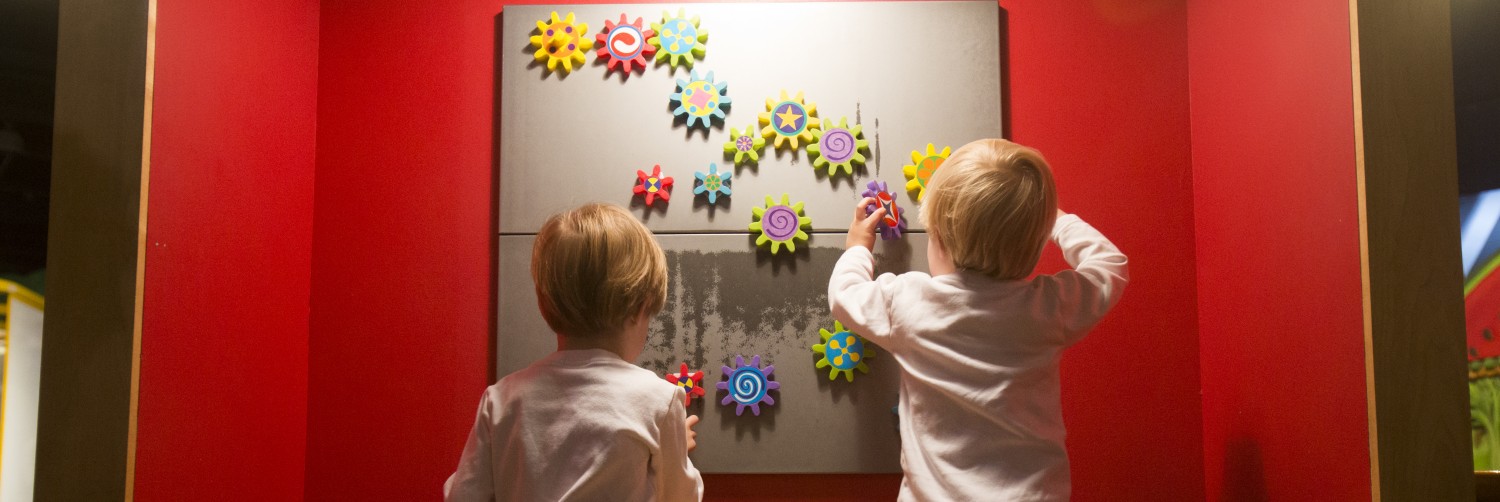This week, we are super excited about welcoming a new feature exhibit on Saturday. This is always a very exciting time for everybody here at the Museum. We love watching the pieces come together and something that we’ve heard about for months click into place. This one looks truly terrific and we are really looking forward to exploring it with you!
The exhibit, Super Kids Save the World exhibit, is based on a children’s book, George Saves the World by Lunchtime, which was written by Jo Readman and illustrated by Ley Honor Roberts. The book was developed by the Eden Project, an educational charity located in Cornwall, England, which is dedicated to showing the importance of taking care of our world. George Saves the World by Lunchtime features an ordinary family, who in the course of their day save the world simply by making responsible choices. George, Flora and Grandpa demonstrate that by taking simple steps, families can become eco-friendly superheroes in their own communities.
Super Kids Save the World features immersive environments inspired by the book where children can learn about “green” practices in their community. The exhibit features a family home with a garden; a re-use charity shop, where kids learn to donate outgrown items instead of discarding them; a recycling center, where today’s trash becomes the materials of tomorrow; a gas station and a Smart car, where families learn tips to reduce fuel consumption; a farmer’s market, where foods come free of wasteful packaging; and even a research lab, where alternative fuel sources are under development. Through pretend play, engaging activities, fun graphics and energy-saving tips, kids can find out how they too can become super kids and save the world.
The exhibit was created by The Magic House, a terrific children’s museum in St. Louis MO, and was designed by Killeen Studio Architects. It debuted at The Magic House in April 2010 and, after a local run of eight months, began touring the country. It will be with us for three months and we can’t wait to play and learn in it!
Here are some facts about recycling and reusing materials:
• Recycled paper requires 64% less energy than making paper from virgin wood pulp, and can save many trees
• It takes 90% less energy to recycle aluminum cans than to make new ones
• 84% of all household waste can be recycled
• Every ton of paper that is recycled saves 17 trees
• The amount of wood and paper thrown away is enough to heat 50 million homes for 20 years
• Each person throws away approximately four pounds of garbage every day
• 5 billion aluminum cans are used each year
• Most families throw away about 88 pounds of plastic every year
• How long does it take for waste to break down? Organic materials, like cotton, rags, or paper, take about 6 months. Plastics and aluminum cans will take 500 years!
Learn lots more, and get ready to have lots of fun, when Super Kids opens on Saturday. We look forward to seeing you!





